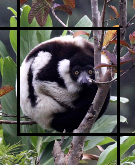A desert tortoise seen at the visitor's center in Death Valley (not normally in the park).
I thought about putting Death Valley with the Deserts of the Southwest pages, but the park is such a special place for me that I decided to give it its own page. For several years I was privileged to teach a course through Sierra College titled, “The Natural History of Death Valley National Monument”, which involved ten-day field seminars in the park. We would spend time camping in various locations studying the nature of the park - exploring its canyons and plant communities. The courses presented a truly exhaustive view of the ecology of the park. I had a blast sharing my passion for this special place.
As well as leading field seminars in the park, I have traveled there many times on my own and with my family. Som has only had a short day trip to the park but I am working on changing this in the very near future! Cokie has yet to see Death Valley and that too will be fixed.
The ecosystem and plant communities of Death Valley are diverse and impressive. The Geology is awesome as well. Take a look at the images below that show a little of what I have experienced here.
Please take a look at our North America Image Galleries!
Death Valley Landscapes Image Gallery
Here are some more images of Death Valley:
